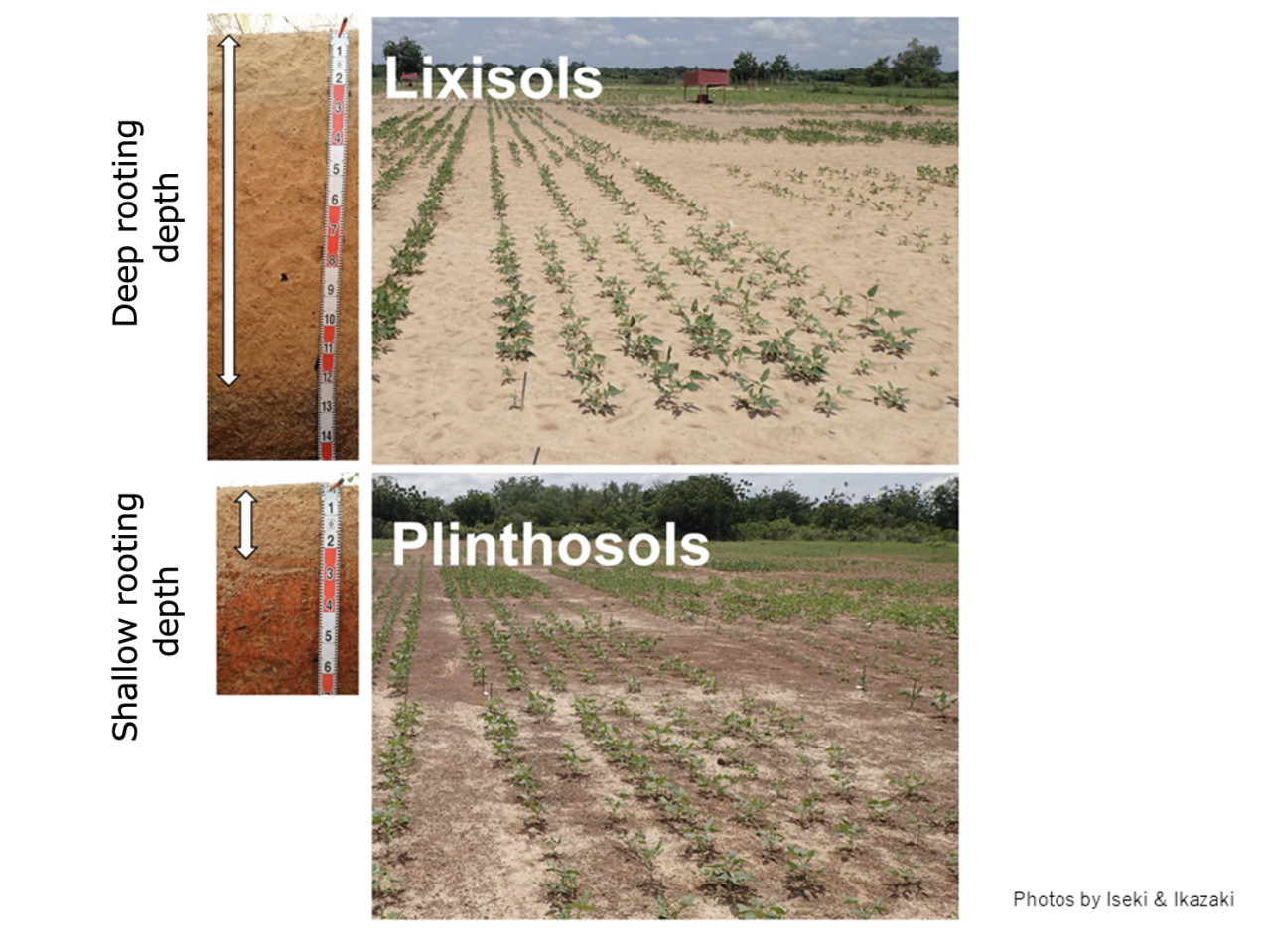Pick Up
811. Fertilizer Not Working? Toward Yield Stabilization in the Sudan Savanna of West Africa, the Globally Renowned Cowpea Production Area

811. Fertilizer Not Working? Toward Yield Stabilization in the Sudan Savanna of West Africa, the Globally Renowned Cowpea Production Area
Cowpea (Vigna unguiculata) is a legume species, a relative of azuki bean. It is commonly used in red bean rice dishes as a substitute for azuki beans, especially in warm regions of Japan. Cowpea originates the coastal regions of West Africa, specifically the Guinea Gulf, which accounts for more than 90% of the world's cowpea production (FAOSTAT, 2023). Cowpea is drought tolerant and can be grown in the interior of West Africa (Sudan savanna) where rainfall is low. Cowpea is not only an important source of protein for local people, but also one of the few sources of cash income for farmers due to its high market value. However, due to low soil fertility and scarce rainfall, the yield per unit area of cowpea in the Sudan savanna is only about a quarter of that in Asia and the United States.
The most straightforward method to increase yields on low-fertility soils is to apply fertilizer. However, due to high fertilizer prices and the fact that fertilizer application does not increase yields as much as expected, fertilizer is rarely used in conventional cowpea farming practices. JIRCAS has been conducting research on cowpea in collaboration with researchers from the the Institute of Environment and Agricultural Research (INERA) in Burkina Faso, which represents the Sudan savanna, focusing particularly on soil types and their relationship with yield. This time we have obtained results that will lead to the effective use of fertilizers and the development of new farming methods that make use of them.
Two dominant soil types are widely distributed in the Sudan savanna: thick and poorly-draining soils (Lixisols) and thin and well-draining soils (Plinthosols). The soil types vary within a narrow range depending on the distance from rivers (Ikazaki et al. 2018), so even within a single farmer, there is a mix of Lixisols and Plinthosols fields. Previous studies have shown that even with the same amount of rainfall, the root zone can experience excess moisture or dry conditions depending on the soil type, which is the cause of local yield variability (Iseki et al. 2021). In the current study, we found that the effect of fertilizer varies with this soil type, with Plinthosols, which have a thinner soil layer, exhibiting a 20% higher response to fertilization compared to Lixisols. Furthermore, when fertilizer application was split into two doses as basal and topdressing, with each dose being half of the total, cowpea efficiently absorbed nutrients, resulting in an average yield increase of 14% compared to applying the entire amount as basal. The difference in fertilizer response based on soil type is attributed to the impact of excessive moisture damage occurring in Lixisols. This finding sheds light on the temporary excess moisture in the soil limiting fertilizer effectiveness, which is an important insight for developing new cultivation techniques tailored to specific locations.
Overall, this research contributes valuable knowledge for the development of new cultivation methods suitable for each specific growing area, particularly in the Sudan Savannah, where previous studies have mainly focused on drought stress and the impact of temporary soil moisture excess has been overlooked.
The results were published in the international journal Field Crops Research under the title Heterogeneity effects of plant density and fertilizer application on cowpea grain yield in soil types with different physicochemical characteristics.
References
FAOSTAT (2023) Statistical database of the Food and Agriculture Organization of the United Nations. https://www.fao.org/faostat/en/#data
Ikazaki, K., Nagumo, F., Simporé, S., Barro, A. (2018). Soil toposequence, productivity, and a simple technique to detect petroplinthites using ground-penetrating radar in the Sudan Savanna. Soil Sci. Plant Nutr. 64, 623–631.
https://doi.org/10.1080/00380768.2018.1502604
Iseki, K., Ikazaki, K., and Batieno, B. J. (2021). Cowpea yield variation in three dominant soil types in the Sudan Savanna of West Africa. Field Crops Res. 261, 108012. https://www.sciencedirect.com/science/article/pii/S037842902031296X?via…
Iseki, K., Ikazaki, K., and Batieno, B. J. (2023). Heterogeneity effects of plant density and fertilizer application on cowpea grain yield in soil types with different physicochemical characteristics. Field Crops Res. 292, 108825
https://doi.org/10.1016/j.fcr.2023.108825
Development of soil and crop management technologies to stabilize upland farming systems of African smallholder farmers (Africa upland farming system)
https://www.jircas.go.jp/en/program/prob/b6
Variety selection for improving cowpea production under multi-environmental conditions in the Sudan Savanna
https://www.jircas.go.jp/en/publication/research_results/2020_b04
JIRCAS Researcher Receives the 24th Japanese Society of Crop Science Young Scientist Award
https://www.jircas.go.jp/en/reports/2020/r20200413
Contributor: IZEKI Kohtaro (Biological Resources and Post-harvest Division)
